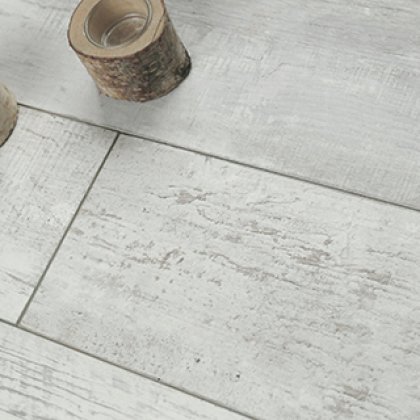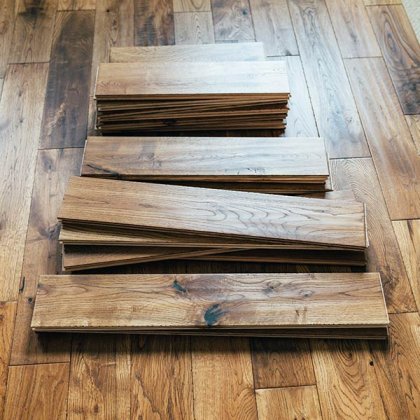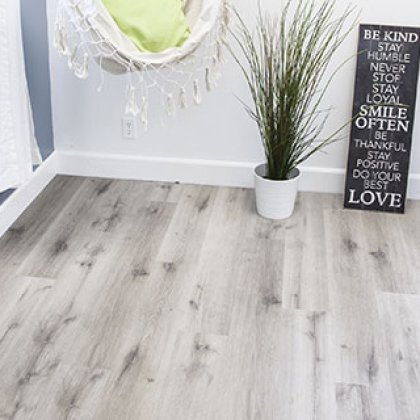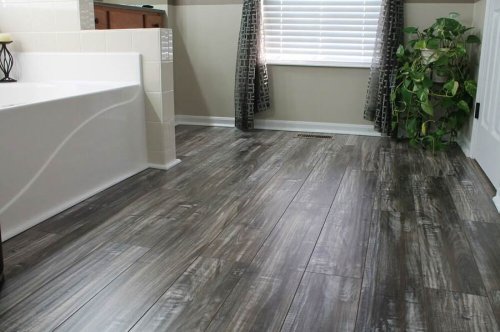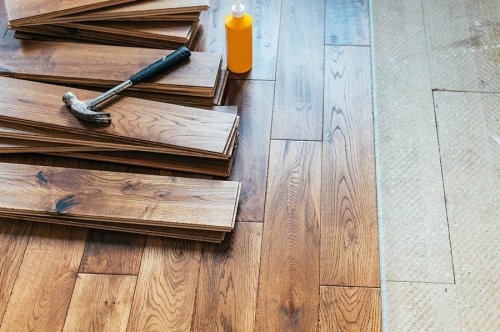Choosing the Perfect Underlayment for Your Laminate Floors

Welcome to our comprehensive guide on selecting the perfect underlayment for your laminate floors. When it comes to laminate flooring, a high-quality underlayment plays a crucial role in enhancing comfort, reducing noise, and protecting your floors from moisture. In this article, we will explore the benefits of using underlayment, provide practical tips on choosing the right option for your needs, and debunk common misconceptions surrounding this essential component of laminate flooring installations.
Key Takeaways:
- Choosing the right underlayment for your laminate floors is important for comfort and durability.
- Underlayment provides benefits such as sound insulation, moisture protection, and subfloor stability.
- Factors to consider when choosing underlayment include subfloor type, noise reduction requirements, and moisture resistance.
- Underlayment thickness impacts sound reduction, subfloor imperfection concealment, and overall floor feel.
- Different underlayment options for laminate flooring include foam, felt, cork, and rubber.
The Benefits of Using Underlayment for Laminate Floors
Laminate flooring has become a popular choice among homeowners due to its affordability, durability, and wide range of design options. However, many people overlook the importance of using underlayment when installing laminate floors. Underlayment is a thin layer of material that is placed between the subfloor and the laminate flooring, offering a range of benefits that enhance the overall performance and longevity of your floors.
Enhanced Sound Insulation
One of the key advantages of using underlayment for laminate floors is the enhanced sound insulation it provides. Without underlayment, footsteps and other noises can be amplified, creating a louder and less comfortable living environment. Underlayment helps to reduce noise transmission, creating a quieter and more peaceful space.
Moisture Protection
Another significant benefit of underlayment is its ability to provide moisture protection. Laminate floors are susceptible to moisture damage, especially in areas with high humidity levels or where spills are common. Underlayment acts as a barrier, preventing moisture from seeping into the laminate flooring and causing warping or mold growth. This helps to preserve the integrity of your floors and ensures they remain in top condition for years to come.
Improved Subfloor Stability
Underlayment also plays a crucial role in improving the stability of your subfloor. It helps to compensate for small imperfections and irregularities in the subfloor, creating a smooth and even surface for the laminate flooring installation. This not only enhances the overall appearance of your floors but also reduces the risk of premature wear and damage.
Overall, using underlayment for laminate floors offers a range of benefits that contribute to a more comfortable, durable, and long-lasting flooring solution. From sound insulation to moisture protection and improved subfloor stability, underlayment is a valuable investment that enhances the performance and lifespan of your laminate floors.
How to Choose Underlayment for Laminate Floors
Choosing the right underlayment is crucial for ensuring the longevity and performance of your laminate floors. With numerous options available in the market, it's essential to consider factors such as subfloor type, noise reduction requirements, and moisture resistance when making your selection. In this section, we will provide practical tips and guidelines to help you navigate the process of choosing the perfect underlayment for your laminate floors.
Consider Your Subfloor Type
Before selecting your underlayment, it's important to understand the type of subfloor you have. Common subfloor materials include concrete, plywood, and particleboard. Each type of subfloor requires a specific underlayment to achieve optimal results. For concrete subfloors, for example, a vapor barrier underlayment is essential to prevent moisture damage. Plywood subfloors, on the other hand, may benefit from an underlayment with sound insulation properties.
Evaluate Sound Reduction Requirements
If noise reduction is a concern, look for underlayment that provides excellent sound insulation properties. This is particularly important for areas such as upstairs rooms or apartments where foot traffic noise can be a disturbance. Underlayments with built-in sound barriers, such as foam or cork, are effective in reducing impact and airborne noise, creating a quieter and more comfortable living environment.
Ensure Moisture Resistance
Moisture resistance is critical in areas prone to high humidity or potential water exposure. Bathrooms, kitchens, and basements, for example, require underlayment that can withstand moisture and prevent water damage. Consider choosing underlayment with vapor barrier properties to create an additional protective layer between your laminate flooring and the subfloor, safeguarding against moisture-related issues.
Consult Manufacturer Recommendations
To ensure the best performance of your laminate flooring, always refer to the manufacturer's recommendations regarding underlayment. Different laminate flooring brands may have specific requirements for underlayment that are tailored to their products. Following the manufacturer's guidelines will guarantee compatibility and preserve the warranty of your laminate flooring.
Consider Your Budget
Underlayment options vary in price, so it's important to consider your budget when making your selection. While some underlayments may come at a higher cost, they often provide additional benefits such as superior sound insulation or moisture resistance. Balancing your budget with your specific needs will help you find the ideal underlayment that fits both your financial constraints and desired flooring performance.
By considering factors such as subfloor type, noise reduction requirements, moisture resistance, manufacturer recommendations, and budget, you can confidently select the perfect underlayment for your laminate floors. Take the time to research and explore the various options available to ensure you make an informed decision that will enhance the comfort and durability of your laminate flooring for years to come.
Understanding Underlayment Thickness for Laminate Flooring
When it comes to installing laminate flooring, the thickness of the underlayment plays a vital role in ensuring a comfortable and durable floor. Understanding the significance of underlayment thickness can help you make informed decisions that enhance the overall performance and feel of your laminate floors.
One of the primary benefits of using underlayment with laminate flooring is sound reduction. The thickness of the underlayment contributes to minimizing sound transmission, creating a quieter and more peaceful environment in your home. Thicker underlayment can effectively dampen footsteps and reduce the impact of heavy objects, resulting in a more serene living space.
In addition to sound reduction, underlayment thickness also plays a role in concealing subfloor imperfections. Uneven or rough subfloors can lead to an uneven laminate floor surface. Thicker underlayment can help to bridge gaps and smooth out minor irregularities, providing a level and seamless foundation for your laminate flooring.
Furthermore, the thickness of the underlayment affects the overall feel of your laminate floor. Thicker underlayment adds cushioning and resilience underfoot, enhancing the comfort and support of your floors. This can be especially important in high-traffic areas or rooms where you spend a significant amount of time standing or walking.
To illustrate the impact of underlayment thickness visually, take a look at the following table:
| Underlayment Thickness | Impact on Sound Reduction | Concealment of Subfloor Imperfections | Overall Floor Feel |
|---|---|---|---|
| 1mm | Minimal | Limited | No noticeable impact |
| 2mm | Improved | Slight improvement | Slight increase in comfort |
| 3mm | Significant | Noticeable improvement | Enhanced comfort and support |
| 4mm | Maximum | Best concealment | Optimal comfort and support |
As you can see, thicker underlayment offers greater benefits in sound reduction, subfloor imperfection concealment, and overall comfort. However, it's essential to strike a balance based on your specific needs and budget, as excessively thick underlayment may not be necessary in all situations.
By understanding the role of underlayment thickness in laminate flooring installations, you can make an informed decision that meets your desired level of sound reduction, subfloor concealment, and floor feel. Consider consulting with flooring professionals or manufacturers to ensure you choose the right underlayment thickness for your specific laminate flooring project.
Different Underlayment Options for Laminate Flooring
When it comes to installing laminate flooring, choosing the right underlayment is essential for achieving the perfect balance of comfort, durability, and sound insulation. With a variety of underlayment options available, it's important to understand the unique characteristics and benefits of each type. In this section, we will explore the different underlayment options for laminate flooring, including foam, felt, cork, and rubber, helping you make an informed decision for your project.
Foam Underlayment
Foam underlayment is one of the most popular choices for laminate flooring due to its affordability and versatility. It provides excellent cushioning underfoot, reducing noise transmission and providing added comfort. Foam underlayment is available in various thicknesses, allowing you to customize the level of support and insulation for your specific needs.
Felt Underlayment
Felt underlayment offers superior sound absorption and moisture resistance, making it a great option for high-traffic areas and rooms with potential moisture concerns. It provides an extra layer of protection against subfloor imperfections, creating a smooth and stable surface for your laminate flooring. Felt underlayment is often made from recycled materials, making it an eco-friendly choice.
Cork Underlayment
Cork underlayment is renowned for its excellent soundproofing properties, making it ideal for multi-level buildings or spaces where noise reduction is a priority. In addition to its acoustic benefits, cork underlayment also provides thermal insulation, helping to keep your floors warm in colder climates. It is a natural, renewable material that is both eco-friendly and hypoallergenic.
Rubber Underlayment
Rubber underlayment is a durable and resilient option that offers great shock absorption and impact resistance. It is highly effective in reducing noise transmission, making it suitable for areas where noise reduction is important. Rubber underlayment is also moisture-resistant, preventing the accumulation of mold and mildew. It is commonly used in commercial settings but can also be a great choice for residential applications.
When selecting underlayment for your laminate flooring, consider factors such as subfloor conditions, desired level of sound insulation, moisture resistance, and overall budget. Each type of underlayment offers its own unique benefits, so it's important to assess which option aligns best with your specific requirements.
| Underlayment Type | Key Characteristics | Benefits |
|---|---|---|
| Foam | Affordable, versatile, cushioning | Noise reduction, added comfort |
| Felt | Sound absorption, moisture resistance | Smoothing subfloor, eco-friendly |
| Cork | Soundproofing, thermal insulation | Eco-friendly, hypoallergenic |
| Rubber | Shock absorption, moisture resistance | Noise reduction, durability |
Top-Rated Underlayment for Laminate Flooring
When it comes to enhancing the performance and longevity of your laminate flooring, choosing the right underlayment is crucial. To help you make an informed decision, we have compiled a list of the top-rated underlayment products specifically designed for laminate flooring. Each of these underlayments offers unique features and benefits that can help you achieve the best results for your flooring project.
| Underlayment | Features | Customer Reviews |
|---|---|---|
| Brand A Foam Underlayment | - High-density foam provides excellent sound insulation - Moisture-resistant barrier protects against potential damage - Easy installation with overlapping seams for a secure fit |
"I installed Brand A Foam Underlayment for my laminate flooring, and I couldn't be happier with the results. The sound reduction is remarkable, and it feels great underfoot." - Jane S. |
| Brand B Felt Underlayment | - Made from recycled materials for a sustainable choice - Dense felt material offers superior subfloor support - Reduces noise transmission for a quieter living space |
"Brand B Felt Underlayment surpassed my expectations. It provided excellent cushioning and kept the sound from traveling between rooms. I highly recommend it." - Michael P. |
| Brand C Cork Underlayment | - Natural cork material provides thermal insulation - Offers superior moisture resistance - Absorbs impact for added comfort and durability |
"I chose Brand C Cork Underlayment for my laminate flooring, and I love how it adds warmth and comfort to my home. It was easy to install and has exceeded my expectations." - Sarah L. |
These top-rated underlayment options are just a few examples of the many high-quality products available in the market. Before making your final decision, consider the specific needs of your space, such as noise reduction requirements, moisture protection, and subfloor stability. Consulting with a flooring professional can also help ensure you choose the underlayment that best suits your laminate flooring project.
Proper Installation Tips for Laminate Flooring Underlayment
When it comes to installing underlayment for laminate floors, following the correct procedure is essential for ensuring a smooth and successful installation. Here are some helpful tips to guide you through the process:
1. Subfloor Preparation
Before installing the underlayment, carefully prepare the subfloor to ensure a clean and even surface. Remove any debris, nails, or staples, and repair any cracks or imperfections. This will help prevent unevenness and noise under the laminate flooring.
2. Choosing the Right Adhesive
Selecting the appropriate adhesive is crucial for a secure and long-lasting underlayment installation. Make sure to use a high-quality adhesive that is specifically designed for laminate flooring. Follow the manufacturer's instructions for proper adhesive application.
3. Seam Sealing
To prevent moisture penetration and enhance the underlayment's performance, it is important to properly seal the seams. Use a seam sealant recommended by the underlayment manufacturer and apply it carefully along the edges and joints of the underlayment sheets.
"Proper subfloor preparation and adhesive selection are essential for a successful underlayment installation."
4. Acclimation
Before installing the underlayment, allow it to acclimate to the room's temperature and humidity for at least 48 hours. This will prevent any potential expansion or contraction issues after installation.
5. Overlapping and Securing the Underlayment
When laying the underlayment, remember to overlap the edges by a few inches to ensure complete coverage. Secure the underlayment to the subfloor using appropriate staples, nails, or adhesive, as recommended by the manufacturer.
6. Checking for Smoothness
After installing the underlayment, check the surface for any bumps, wrinkles, or unevenness. Use a roller or your feet to smooth out any imperfections before proceeding with the laminate flooring installation.
7. Follow Manufacturer's Instructions
Always refer to the specific instructions provided by the underlayment and laminate flooring manufacturers for proper installation guidelines. Each product may have unique recommendations that should be followed for optimal performance.
8. Quality Control
Inspect the entire underlayment installation to ensure it meets the highest quality standards. Check for any loose areas, gaps, or improper seams. Address any issues before proceeding with the laminate flooring installation.
| Installation Tips | Benefits |
|---|---|
| Proper subfloor preparation | Ensures a smooth and even surface for laminate flooring |
| Choosing the right adhesive | Enhances underlayment's stability and durability |
| Seam sealing | Prevents moisture penetration and enhances performance |
| Allowing underlayment to acclimate | Prevents potential expansion or contraction issues |
| Proper overlapping and securing | Ensures complete coverage and stability |
| Checking for smoothness | Eliminates bumps and wrinkles for a seamless flooring surface |
| Following manufacturer's instructions | Ensures proper installation for optimal performance |
| Performing quality control | Ensures a high-quality and durable underlayment installation |
Factors to Consider When Choosing the Best Underlayment for Laminate Flooring
When it comes to laminate flooring, selecting the right underlayment is crucial for ensuring long-term durability, comfort, and overall performance. With a wide range of options available in the market, it can be overwhelming to choose the best underlayment for your specific needs. However, by considering a few key factors, you can make an informed decision that will complement and enhance your laminate flooring installation.
Budget
Before diving into the selection process, it's essential to establish a realistic budget for your underlayment. The cost of underlayment can vary depending on the material and quality, so having a predetermined budget will help you narrow down your options and avoid overspending.
Subfloor Conditions
Understanding the conditions of your subfloor is vital in choosing the right underlayment. If you have a concrete subfloor, you'll need an underlayment with moisture protection properties to prevent any potential damage from moisture seepage. On the other hand, if you have a wood subfloor, ensuring proper sound insulation and subfloor stability will be the primary considerations.
Thermal Insulation Needs
If you're looking to insulate your laminate flooring to create a warmer and cozier environment, consider underlayments with thermal properties. These underlayments provide an additional layer of insulation, preventing heat loss and reducing energy consumption.
Environmental Considerations
For those who prioritize eco-friendly options, there are underlayments available made from recycled materials or sustainable resources. These underlayments not only contribute to reducing waste but also offer comparable performance to traditional underlayments.
By carefully considering these factors - budget, subfloor conditions, thermal insulation needs, and environmental considerations - you can make an informed decision and choose the best underlayment for your laminate flooring. Remember, investing in high-quality underlayment will pay off in the long run, providing you with a comfortable, durable, and aesthetically pleasing floor for years to come.
Longevity and Durability of Underlayment for Laminate Floors
Choosing the right underlayment for your laminate floors not only enhances their comfort and stability but also plays a crucial role in their long-term durability and lifespan. Investing in quality underlayment can provide numerous benefits that go beyond simple floor installation.
Preventing Moisture Damage: One of the key advantages of using underlayment is its ability to protect your laminate floors from moisture damage. The underlayment acts as a barrier, preventing any moisture that may seep through the subfloor from reaching the floorboards. This is particularly important in areas prone to high humidity or where spills are common.
Reducing Wear and Tear: Laminate floors are susceptible to wear and tear over time, especially in high-traffic areas. Underlayment helps absorb impact and distribute weight evenly, reducing the stress on the floorboards. This can significantly extend the lifespan of your laminate floors, keeping them looking fresh and new for longer.
Preserving Floor Appearance: Underlayment acts as a cushioning layer that helps prevent flaws and imperfections on the subfloor from telegraphing through the laminate flooring. It smooths out minor subfloor irregularities, ensuring a level and seamless surface. By preserving the overall appearance of your floors, underlayment adds an extra touch of elegance to your space.
By selecting the appropriate underlayment for your laminate floors, you can enjoy these long-term benefits and protect your investment for years to come. In the next section, we will explore common concerns and misconceptions about laminate flooring underlayment, providing clarity and guidance to help you make an informed decision.
Addressing Common Concerns and Misconceptions about Laminate Flooring Underlayment
When it comes to laminate flooring underlayment, there are several common concerns and misconceptions that need to be addressed. These concerns often revolve around cost, installation complexity, and the potential impact on floor height and stability. However, it's important to separate fact from fiction when making decisions about underlayment for your laminate floors.
Cost Concerns:
One of the main concerns people have about underlayment for laminate flooring is the cost. Some believe that underlayment is an unnecessary expense that can be skipped to save money. However, investing in quality underlayment can actually save you money in the long run. Underlayment provides crucial benefits such as sound insulation, moisture protection, and improved subfloor stability, all of which contribute to the longevity and durability of your laminate floors.
Installation Complexity:
Another misconception is that installing underlayment for laminate flooring is a complicated and time-consuming process. While it may require some basic DIY skills, installing underlayment is generally straightforward and can be done by homeowners with the right tools and guidance. Many underlayment products come with clear installation instructions, making the process easier for even novice installers.
Impact on Floor Height and Stability:
Some people worry that using underlayment for laminate flooring will result in an increased floor height or compromise the stability of their floors. However, most underlayment products are designed to be thin yet effective, minimizing the impact on floor height while still providing the necessary benefits. Additionally, underlayment actually improves subfloor stability by filling in any gaps or unevenness, creating a level surface for your laminate floors.
It's important to be well-informed and separate fact from fiction when it comes to laminate flooring underlayment. By understanding the benefits and debunking common misconceptions, you can make an informed decision and choose the right underlayment that will enhance the comfort, durability, and overall performance of your laminate floors.
Conclusion
Choosing the right underlayment for your laminate floors is a crucial step in ensuring their long-lasting comfort and durability. Throughout this article, we have explored the various advantages of using underlayment, such as enhanced sound insulation, moisture protection, and improved subfloor stability.
To select the best underlayment for your laminate floors, consider factors like the type of subfloor, noise reduction requirements, and moisture resistance. Additionally, understanding the significance of underlayment thickness and exploring different options like foam, felt, cork, and rubber can help you make an informed decision.
When it comes to installation, it is important to follow proper techniques, including subfloor preparation, adhesive application, and seam sealing. Taking into account considerations like budget, subfloor conditions, thermal insulation needs, and environmental impact will help you choose the best underlayment for your specific requirements.
By using the right underlayment, you can increase the longevity and durability of your laminate floors, protecting them from moisture damage, reducing wear and tear, and preserving their appearance. Addressing common concerns and misconceptions, such as cost, installation complexity, and floor height, can provide clarity and confidence in your decision-making process. Remember, selecting the perfect underlayment for your laminate floors is essential for creating a comfortable, resilient, and visually pleasing space.
FAQ
What is the importance of selecting the right underlayment for laminate floors?
Choosing the right underlayment for laminate floors is crucial as it contributes to their overall comfort and durability. It provides sound insulation, moisture protection, and improved subfloor stability.
What are the benefits of using underlayment for laminate floors?
Using underlayment with laminate flooring offers several advantages, including enhanced sound insulation, moisture resistance, and improved subfloor stability. It also provides a more comfortable feel underfoot.
How do I choose underlayment for laminate floors?
When selecting underlayment for laminate floors, consider factors such as subfloor type, noise reduction requirements, and moisture resistance. You may choose from options like foam, felt, cork, or rubber underlayment based on your specific needs.
What is the significance of underlayment thickness for laminate flooring?
Underlayment thickness plays a role in sound reduction, concealing subfloor imperfections, and the overall feel of the floor. Thicker underlayment generally provides better noise reduction and subfloor irregularity concealment.
What are the different underlayment options for laminate flooring?
There are various underlayment options available for laminate flooring, such as foam, felt, cork, and rubber. Foam underlayment is the most common choice due to its affordability and sound reduction properties, while cork offers excellent sound insulation and moisture resistance.
Can you recommend some top-rated underlayment for laminate flooring?
Some top-rated underlayment products for laminate flooring include QuietWalk, Roberts AirGuard, and FloorMuffler. These products are known for their superior sound absorption properties, moisture protection, and ease of installation.
What are some installation tips for laminate flooring underlayment?
Proper installation of underlayment for laminate floors involves thorough subfloor preparation, precise measurement and cutting of the underlayment, adhesive application, and sealing of seams. It is important to follow the manufacturer's instructions for the specific underlayment product you are using.
What factors should I consider when choosing the best underlayment for laminate flooring?
Factors to consider when choosing the best underlayment for laminate flooring include your budget, subfloor conditions, thermal insulation needs, and environmental considerations. It is important to select an underlayment that meets your specific requirements.
How does underlayment impact the longevity and durability of laminate floors?
Underlayment plays a significant role in the longevity and durability of laminate floors. It helps prevent moisture damage, reduces wear and tear on the flooring, and preserves its appearance over time. By providing a stable and protective barrier, underlayment extends the lifespan of your laminate floors.
What common concerns and misconceptions surround laminate flooring underlayment?
Common concerns and misconceptions about laminate flooring underlayment include the belief that it is expensive, complicated to install, and may affect floor height and stability. In reality, there are affordable options available, installation is relatively straightforward, and underlayment can actually improve floor stability.






